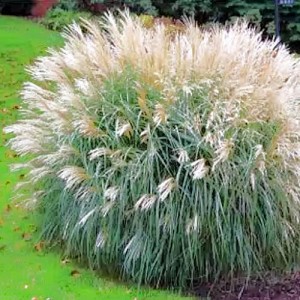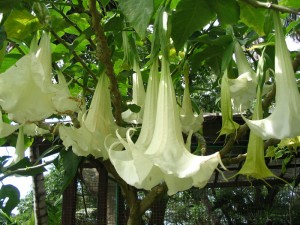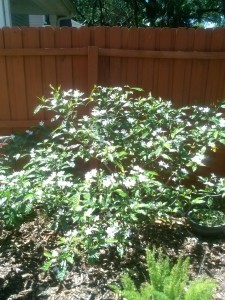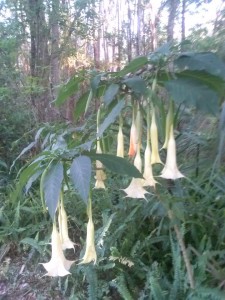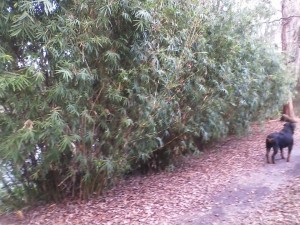Landscape design incorporates many of the same concepts as any other type of artistic endeavor, whereupon one hopes to capture the heart and interest of those that view it. Creating a beautiful landscape design is no different than creating a beautiful dance, painting, musical score, or fine meal, where we, as the artist, try to provide the viewer with an experience that challenges and pleases all of the senses, through balance, flow, and sensual interest.
To achieve that in a landscape design, one must incorporate a few basic design concepts: specimen plants, focal points, background/screening plants, and filler plants (ground-covers, color, and such). Today, though, we are going to focus on focal points.
Specimen plants are your large plants which are usually trees or palms. Generally, they are tall and large, and the first thing that someone sees, when they approach your landscape. I like to equate them to a large sectional sofa or entertainment center in a living room. Background/screening plants are usually the hedges in the background, that allow the forward plants to pop; I call them the curtains and chairs in a living room. The filler plants are the smaller grasses, ground-covers, etc. that fill up the majority of the rest of the landscape, that have color and interest, and I call them pictures and lamps.
Using living room decoration as an analogy then, in landscape design concepts, focal points are the mid-sized furniture: cocktail tables and recliners. If everything is tall or small, you have to have an in-between for balance, flow, and interest. For me, most landscape designs are missing the focal point, which I call the 3'X3' or 4'X4' plant.....the cocktail table or recliner. The human eye just does not easily scan a landscape canvas with bold height, and short low plants, without hiccuping. You have to have the focal point, the mid-sized item, to bridge the divide from high to low. Fortunately, a focal point is easy to add to your landscape design.
Focal points can be anything from plants, to statues, to boulders, to benches and bird baths. They just have to be a mid-sized selection that interrupts your view from high to low in a pleasing way. They should be substantial in impact, through size, color, or texture difference, but not so bold that they are the first thing that you see (in that case, they may become a specimen).
Some options to consider, both plant and non-plant:
- Agave, Striped or Blue
- Orange Bird of Paradise
- Crinum Lily
- Cardboard Palm
- Coontie Palm (purchased mature, extremely slow growing)
- King Sago palm
- Windmill Palm, European Fan Palm, Needle Palm
- Xanadu, Firecracker Plant (slow growing, possibly over time will work)
- any smaller growing plants in group of three or so
- Bird baths, statues, large pots with or without plants, boulders
Mostly, the idea is to designate an area that is about 4'X4' and create a secondary centerpiece that does not compete with your specimens, that creates flow and balance. As with all artistic efforts, there are no rules, just thoughts and ideas, so you can't go wrong. Try ideas out, draw them on paper, put a chair in that spot or a short trash can (the 3'X3' kind). Test your ideas with similar household items, and see what you think of the placement with regards to space and concept. And, then, go shopping and explore your options, and buy what you like. As is true with all landscape design, there are so many options to style and products, it is impossible to not get what you love. So, get what you love, and don't settle for anything less.
With a few guiding principles of landscape design concepts, you can create a beautiful landscape for your home.
Post a question or comment, I'd be happy to answer what I can.









